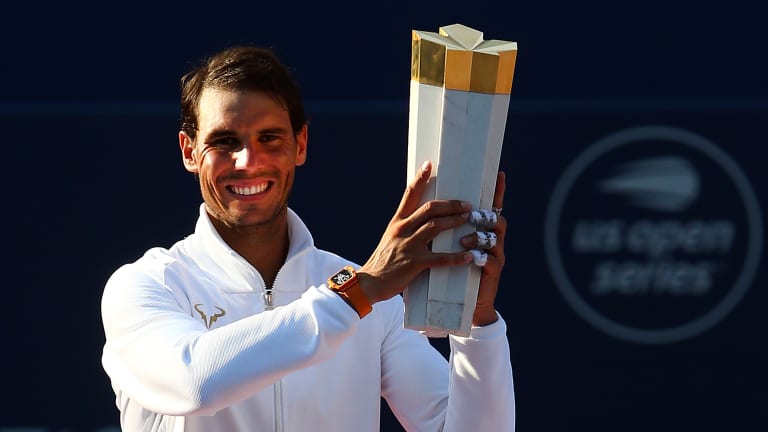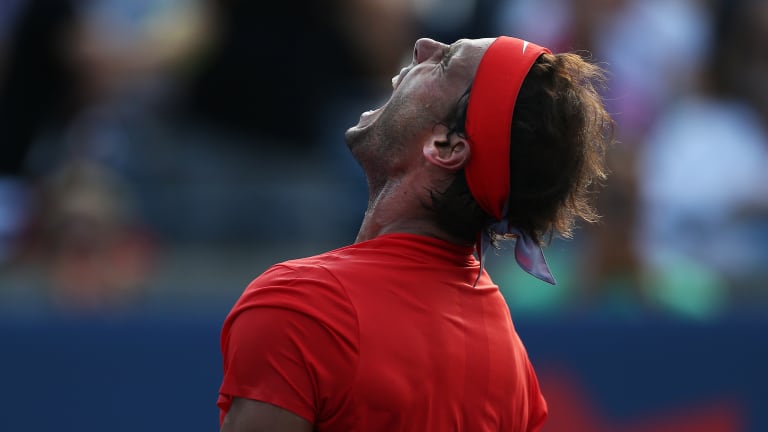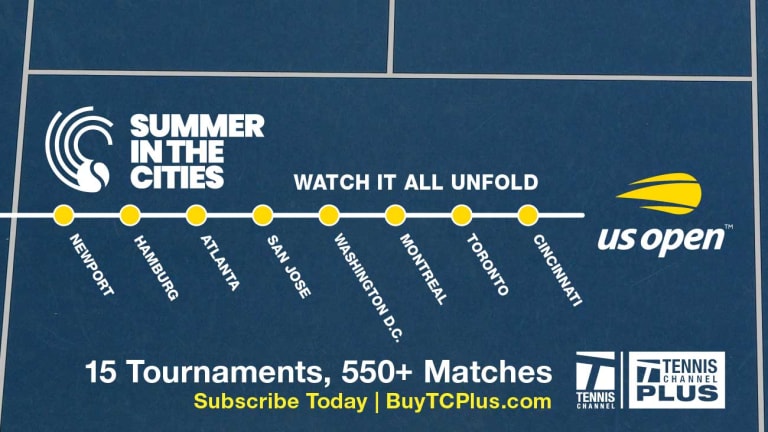ATP Montreal, Canada
Nadal's shift from grass to hard courts has always been complicated
By Aug 06, 2019ATP Montreal, Canada
Carreno Busta after conquering Montreal: “It’s very important to stay positive all the time”
By Aug 15, 2022ATP Montreal, Canada
Pablo Carreno Busta captures first Masters 1000 title of career in Montreal
By Aug 14, 2022ATP Montreal, Canada
Hubert Hurkacz makes his second Masters 1000 final with a comeback win over Casper Ruud
By Aug 13, 2022ATP Montreal, Canada
Casper Ruud takes out home favorite Felix Auger-Aliassime to reach Montreal semis
By Aug 12, 2022ATP Montreal, Canada
In Montreal, Nadal pulls off first career hard-court defense with ease
By Aug 12, 2019ATP Montreal, Canada
Making each shot count, Daniil Medvedev backing up early Top 10 status
By Aug 10, 2019ATP Montreal, Canada
In his biggest final, Medvedev to battle Nadal for Montreal crown
Aug 10, 2019ATP Montreal, Canada
Rafael Nadal overcomes slow start to defeat Fabio Fognini in Montreal
Aug 09, 2019ATP Montreal, Canada
Top 5 Photos, August 8: Pliskova eyes No. 1 return; Zverev's revenge
By Aug 08, 2019ATP Montreal, Canada
Nadal's shift from grass to hard courts has always been complicated
The central player at this week's Masters tournament in Montreal; Rafa has experienced plenty of success on the surface, but remains susceptible to the physical toll it can deliver.
Published Aug 06, 2019
Advertising

Nadal's shift from grass to hard courts has always been complicated
© Getty Images
Advertising

Nadal's shift from grass to hard courts has always been complicated
© Getty Images
Advertising

Nadal's shift from grass to hard courts has always been complicated